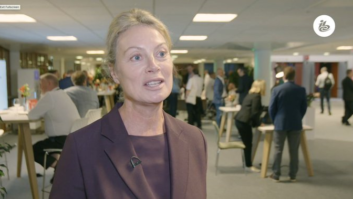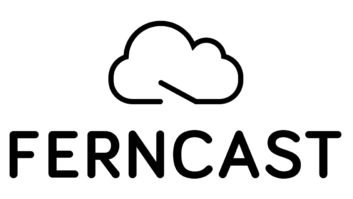IBC2017 is approaching. Between now and then Radio World offers a series of short Q&As with manufacturers about their plans and offerings to help you get the most out of the annual trade show. Pascal Malgouyard is head of Marketing for Digigram.

Radio World: How has business been for the company since last year’s IBC show?
Pascal Malgouyard: Business has evolved a lot recently for Digigram. The company is starting to get results from its investments in cloud technologies. The SaaS-based master control room solution, Iqoya *Cloud, won an award at the 2017 NAB Show, and blu by digigram, our virtual talkshow for outside broadcasting, is attracting a lot of interest. Numerous high-end IP studio-to-studio and distribution projects from two to 64 channels have been achieved worldwide, based on our full range of Iqoya equipment or pure software solutions to serve Studio–to-Studio Links (STL), DAB+ or FM STLs and webradio delivery applications.
Radio World: What are you hearing from your customers about their business outlook this year? In what areas should we expect growth or the most interesting projects?
Malgouyard: Migration to IP audio is now an industrial demand from radio stations when moving or revamping. We are beginning to see significant projects where audio needs to be streamed in real time and uncompressed outside of the studio for regional-to-national or studio-to-studio production. Numerous projects are set up to use IT technologies such as WebRTC for ultra-mobile outside broadcasting, also including small videos for interviews or commentaries. We should therefore expect more live content in the newsrooms. Content Delivery Network companies (CDN) are interested in adding value and higher audio quality to their transport and monetization offerings, in order to complement the increase in webradio and podcast audiences. Finally, cloud solutions are now starting to be considered, not only for specific backup conditions such as disaster recovery, but also for nominal workflow activity.
Radio World: What do you anticipate will be the most significant technology trend at IBC2017?
Malgouyard: All the technological developments that are devoted to increased workflow flexibility and reduce the cost of content capturing, production and delivery. The most significant example is AoIP migration in the studio, which is becoming an industrial reality with AES67 — China has recently adopted officially AES67 as a national standard. As a consequence, AES67 streaming is becoming common in most audio mixers’ ecosystems, in addition to their proprietary standard. Its usage is expected to be highly simplified by the introduction of multivendor routing and control applications for non-IT audio operators, using open standards such as AES70 or NMOS.
Radio World: You’ve been active in contribution, production, and distribution of digital content for 30 years. What’s the biggest problem or challenge facing users in this segment right now?
Malgouyard: In most cases, IP migration leads to heterogeneous multivendor environments that need to interoperate, as we will see at this year’s IBC IP Showcase. Because AES67 has been intentionally limited to audio streaming and not upgraded with common discovery, streaming management and control, studio administrators and operators still need to use audio management tools scattered between several open protocols (AES70, NMOS, EMBER+…) when not fully proprietary. For IP outside broadcasting, “last mile” 4G/LTE connectivity to the internet is still viewed with contrasted results between the actual adoption by journalists who need a dependable connection and the reassuring recommendations of technicians.
Radio World: How has IP technology affected your company and products?
Malgouyard: IP technology allows Digigram to offer more flexibility to its clients’ workflows. IP is about transcending boundaries, enabling new usages. IP has allowed Digigram to reach new clients with a whole range of IP audio encoding and transcoding engines of any number of channels for contribution and distribution applications. Inside the studio, the presence of Digigram in the IBC IP Showcase for the second time reflects its strong interest in audio networking. At IBC2017, we are introducing our new Audioway range of solutions to provide for low latency and multichannel AoIP studio production, while also lowering the cost of remote production in uncompressed IP audio environments. To take into account the new availability of Dante/AES67, Digigram integrates SAP (Dante/AES67) discovery in its IP products in addition to mDNS (Ravenna).
Radio World: What new products will your company be showing? Why should attendees visit your booth?
Malgouyard: On stand 8.C51, Digigram is presenting two SaaS applications for outside broadcasting: a virtual talkshow and a master control room application. They both provide secure instant studio connection, strong SIP infrastructure and codec interoperability. In addition, we are also presenting a highly powerful Iqoya range of IP encoding, transcoding and transport solutions, giving clients the possibility to choose the best fit for them: hardware or software solutions, from 2 to 64+ stereo channels. These solutions are used in FM STLs, DVB multiplexers for satellite, DAB+ encoders for digital radio and web radio CDN delivery. Finally, Digigram will launch the first element of its new Audioway range of IP solutions for studios. Audioway Bridge is an ultra-low latency multichannel routing matrix between IP audio and MADI or AES/EBU audio, also providing all the clock synchronization and PTP source between IP audio and legacy audio. Last but not least, our newly appointed CEO, Jérémie Weber, will be pleased to discuss future projects with attendees, detailing how Digigram can offer its services to maximize customer benefits.
Radio World: Is the IBC Show a good investment?
Malgouyard: It is a big investment, and have been exhibiting at IBC since 1990! The European market is the largest for Digigram and this show takes place at a great time of the year to meet clients and start new projects.
Radio World: What’s your favorite thing about the IBC show?
Malgouyard: IBC is useful for gathering information, to get a feeling, see what’s new among the competition, and see if we are aligned with actual market expectations. We are glad to meet our clients, of course, and the entire radio and TV industry — end users, integrators, manufacturers. Our product managers are always fond of benchmarking the best of video/cinema/studio production innovations to improve Digigram’s audio ecosystem!
Radio World: Social media is the new marketing frontier these days. Is it affecting the way your company does marketing/business?
Malgouyard: We have more and more clients contacting us through social media. We have also noted that final decision makers or even end users are starting to increasingly explore the potential answer to their needs before any direct contact or advice from manufacturers. We therefore pay quite a bit of attention to posting interesting, useful content, particularily on our blog https://blog.digigram.com. However, direct contact is still the most important part of our sales approach.












